Self-Introduction Speech Examples & Tips to Help You Be Confident & Calm
Here's how you can nail your self-introduction speech, without the sweaty palms! Go from nervous to natural with these tips.
It's time! The moment for your self-introduction speech is upon you. Are your palms sweating just at the thought? There are two secrets to making it easier to give an introduction speech about yourself: practice and preparation.
And with those two things already on your to-do list, we took care of some of the lifting for you with these self-introduction speech examples. Plus plenty of tips to help you not only get through it but get through it and feel good about it after. Yes, it is possible. And you're on your way!

Easy Self-introduction Speeches for School
It's the first day of school or of the semester. Perhaps you've found yourself in a new classroom halfway through the academic year. No fear, these intros will ease you into things and hook you a few new friends and classroom groupmates, too.
- Student Council Speech Ideas & Tips to Help You Win
- Editorial Writing Examples & Tips to Share Your Opinion
- 15 Powerful Attention Getters for Any Type of Speech
Self-Introduction for Elementary or Middle School Kids
For the younger kiddos, these intros are all about who they are and what makes them happy.
- "Hi, everybody! My name is [Your Name], and I'm super excited to be in this class with all of you. I'm [Your Age] years old. I live with my family, and we have a dog named [Dog's Name] who likes to eat all my homework. I really love dinosaurs, especially the T-Rex because he's big but has tiny arms, just like my baby brother when he tries to reach for cookies on the high shelf. In my free time, I love building rocket ships from Legos. One day, I hope to become an astronaut and find aliens -- friendly ones, of course!"
- "Good morning, everyone! I'm [Your Name], and I'm really excited to be part of this class. I am [Your Age] years old. At home, I'm the queen/king of board games, although my cat [Cat's Name] often tries to join in and messes up the pieces. My favorite food is pizza, because who can say no to pizza? And when I grow up, I want to be a detective because I love solving mysteries, like where my missing socks go in the dryer. I'm looking forward to learning and having fun with all of you this year!"
Self-Introduction Speech for High Schoolers
Give new classmates an in or let people know that you're just like them so you can make friends once you find the cafeteria.
- "Hey everyone, I'm [Your Name]. I'm new here, so please go easy on me if I can't find my way to the cafeteria. A few facts about me: I love music and play the guitar -- it's like a six-stringed stress buster for me. I'm a total sci-fi geek. If you need someone to debate Star Wars vs. Star Trek, I'm your person! And I have a secret ambition: to try every ice cream flavor in the world. Looking forward to getting to know all of you."
Self-Introduction Speech for College Kids
A quip about your major is a great way to start, but you can also loop in anything you love (or avoid) on your campus too, even if it's the steps by the library that seem to go on for eternity.
- "Hello everyone! My name is [Your Name] and I'm majoring in [Your Major]. When I'm not elbow-deep in textbooks or caffeine, I love exploring the city, one coffee shop at a time. Yes, I'm a self-confessed coffee addict and my dream is to find the perfect cup of coffee. I also enjoy [Another Hobby], because what's life without a little variety, right? Excited to be on this journey with you all!"
Job Interview Self-Introduction Speech
There's nothing like the dreaded "tell us about yourself" comment at an interview. The good news? You won't have any more nightmares because this intro is the perfect way to ease into the answer.
- "Good morning/afternoon! I'm [Your Name], and it's a pleasure to meet you. I graduated from [Your University] with a degree in [Your Major], and since then, I've gained [Number of Years of Experience] years of experience in the [Your Field] field. During my previous role at [Your Previous Company], I was responsible for [Key Responsibility] and I [Describe a Key Achievement or Impact You Made]. What I particularly enjoyed about that role was the opportunity to [Something You Enjoyed that Relates to the New Job]. In my free time, I enjoy [Briefly Mention a Hobby], which helps me to [Explain How It Applies to the New Role]. For example, [Concrete Example of How Hobby Relates to Job]. I'm excited about the possibility of bringing my unique experience and passion for [Mention Something About the Company or Role] to this position. Thank you for this opportunity to interview."
- Wedding Reception Introductions for Every Type of Couple
Work Self-Introduction Speeches
Make a smooth, witty, and warm self-introduction when you land the job or want to kick off an introduction with ease.
Introduction for a New Job
You're the new kid on the block at the office, you have enough to learn, here's an easy intro on your first day before jumping in.
- "Hello team, I'm [Your Name]. I'm thrilled to be joining the [Company Name] family as your new [Your Job Title]. I come with a background in [Relevant Skills or Experience], and most recently, I was at [Previous Company] where I [Describe a Key Achievement or Project]. Outside work, I love [A Personal Interest or Hobby]. I look forward to collaborating with all of you and contributing to our shared success."
Introduction for a Presentation or Meeting
Before you launch into the important information, take a moment to let people know who you are, why you're giving this presentation, and why you're qualified to do it. After all, you've done all the hard work, allow your accolades to shine.
- "Good morning/afternoon everyone, for those who don't know me yet, I'm [Your Name], the [Your Job Title] here at [Company Name]. I oversee [Briefly Describe Your Responsibilities]. I've been with [Company Name] for [Duration at the Company], and before that, I worked at [Previous Company]. Today, I'm excited to discuss [Topic of Presentation or Meeting]. Although if you want to chat after, I also love [Hobby]."
Introduction for a Networking Event
You'll be introducing yourself a lot at networking, so now is the time to make yourself pop and be memorable.
- "Hello, I'm [Your Name], currently serving as a [Your Job Title] at [Company Name]. I've been in the [Your Industry] industry for [Number of Years], specializing in [Your Specialty]. When I'm not [Job-Related Activity], I like to [Personal Interest or Hobby]. I'm eager to meet like-minded professionals and see how we can help each other grow in our careers."
Introducing Yourself at a Funeral
Whether you're delivering a eulogy, poem, or making a brief introduction of yourself to other family and friends, you can rely on this intro to make things a little easier.
- "Good morning/afternoon, everyone. My name is [Your Name], and I had the honor of being [Deceased's Name]'s [Your Relation to the Deceased, e.g., friend, colleague, neighbor]. We shared many [memories/experiences] together, and I am here to pay my respects and celebrate the remarkable life they led. Their [specific quality or memory] has always stuck with me, and it is something I will carry in their memory."
How to Introduce Yourself at a Party
It's party time! Keep the intro laid back and casual.
- "Hi! I'm [Your Name]. I may know some of you from [How You Know Some People at the Party]. I'm [a brief sentence about yourself, e.g., your job, where you're from]. I'm a bit of a [Hobby] enthusiast, so if you ever want to chat about [Topic Related to Hobby], I'm all ears."
Examples of How to Introduce Yourself to a New Group
You're the newbie, and there's nothing wrong with that. Start your clean slate with a short and sweet intro.
- "Hello, everyone! My name is [Your Name]. I'm thrilled to be joining this group! I have always been passionate about [Your Hobby]. It all started when [A Short Story About How You Got Started With This Hobby]. Over the years, my love for it has only grown, and I've spent countless hours [Describe Something You Do Related to The Hobby].
- Apart from this, I'm [Something About Your Job or Other Interests]. In my day-to-day life, I'm a [Your Profession], which can be pretty demanding, but [Your Hobby] has always been my perfect stress-buster.
- I joined this group because I wanted to meet people who share this passion, learn from your experiences, and hopefully contribute with some of my own insights. I'm really excited to be a part of this community and can't wait to get to know all of you better!"
10 Tips for Writing and Making a Self-Introduction Speech
Here are some tips to keep in mind while writing and giving your self-introduction speech. The most important tip, however, is to do what feels natural and flows easily.
- Know Your Audience : Tailor your introduction to the context and the audience. A self-introduction at a professional event will be very different from one at a casual party.
- Start Strong: Grab the audience's attention from the beginning. You can start with an interesting fact about yourself, a short story, or a joke if the setting is informal.
- Keep It Brief: Your introduction should be concise and to the point. Stick to key details about who you are, what you do, and perhaps one or two interesting facts or hobbies.
- Be Authentic : Genuine introductions are the most memorable. Be honest about who you are and don't be afraid to show some personality.
- Highlight Key Moments : Especially in a professional setting, it can be helpful to highlight a few key experiences or achievements that have defined your career or personal life.
- End on a Positive Note: Conclude your introduction on a positive or forward-looking note. You could express excitement about the event or meeting, or share a hope or goal for the future.
- Practice, Practice, Practice : Rehearse your introduction speech so you can deliver it confidently and naturally. This will help reduce any nerves and ensure you come across as polished and professional.
- Be Engaging : Use body language to engage your audience. Make eye contact, smile, and use gestures where appropriate.
- Relate It to the Purpose of the Event : If there's a specific reason for your introduction (like starting a new job, or joining a club), make sure to mention your relationship to the event or group and your expectations or goals.
- Provide A Personal Touch : Share a little about your personal life (like a hobby or interest) to make your introduction more unique and memorable.
Remember, the goal is to introduce yourself effectively, not to tell your entire life story. Keep it brief, engaging, and genuine .
Introducing Yourself With Ease
Sit yourself in front of the mirror, and run through your lines like an actor for a play, and in no time at all, the words will flow and you'll find a natural cadence. You may even surprise yourself with how easily your introductions flows once you take the stage. Don't be surprised if people ask how you were so calm and cool.
Speeches HQ
6 Sample Introduction Speeches about Yourself
Getting up to introduce yourself can make anyone feel nervous. Speaking at a business meeting, community event, or social gathering shapes how others see you from that moment forward.
Many people find it hard to balance being professional and personable during self-introductions. Here’s some good news. With the right approach and structure, you can create a memorable first impression that connects with your audience while staying true to who you are. These examples will help you introduce yourself with confidence.
Sample Introduction Speeches about Yourself
These carefully crafted speeches will guide you through creating engaging self-introductions for various occasions.
“Hello everyone. As the newest member of the marketing team, I want to share a bit about myself. My story started in a small town in Oregon, where I grew up surrounded by nature and technology. My parents ran a local computer repair shop, which sparked my interest in both technical skills and customer service.
After graduating from Portland State with a degree in Digital Marketing, I spent five years helping small businesses build their online presence. The most rewarding part was seeing local artisans and family-owned shops succeed through social media. One project that brings me particular pride involved helping a 70-year-old bakery triple their customer base through strategic social media campaigns.
My passion lies in combining data-driven strategies with genuine storytelling. Outside work, you’ll find me hiking trails, experimenting with photography, or volunteering at the local animal shelter. Looking forward to bringing fresh ideas to our team and learning from each of you.”
— END OF SPEECH —
Commentary: A balanced blend of professional background and personal interests makes this speech perfect for team introductions, first-day presentations, or department meetings. The speaker effectively weaves together their expertise and human side while maintaining professionality.
“Good morning fellow Toastmasters. Did you try teaching a goldfish to swim through a hoop? That’s exactly what led me to discover my calling as a pet behavioral specialist. That childhood experiment with my goldfish, Einstein, taught me more about patience and positive reinforcement than any textbook could.
Through fifteen years of working with animals, I’ve learned that every creature has its own personality and way of learning. From helping anxious rescue dogs find confidence to teaching parrots to reduce their screaming habits, each day brings new challenges and victories. My specialty? Working with pets others have given up on.
What really motivates me is seeing the joy on pet owners’ faces when they finally connect with their furry or feathered friends. Beyond my practice, I run a monthly workshop at the community center, teaching children how to safely interact with animals. My goal here at Toastmasters? To become better at sharing these experiences and knowledge with other animal lovers.”
Commentary: This speech uses storytelling and humor to create an engaging introduction that works well for networking events, professional organizations, or speaking clubs. The personal anecdote about the goldfish immediately draws listeners in while establishing credibility in the speaker’s field.
“Friends and neighbors, my name is Sarah Chen, and my story starts three blocks from here at Mason Elementary, where I spent countless hours drawing on any surface I could find. Those chalk drawings on the playground sparked a path that would shape my entire life.
Today, I own the supply store on Main Street, but that’s just part of who I am. Many of you might recognize me from the weekend classes I teach at the community center or the murals I’ve painted around town. Each of those murals tells a story about our neighborhood, capturing moments that make our community special.
My latest project involves working with local seniors to document their memories through group projects. These sessions have shown me the rich history of our area and the amazing people who built it. The paintings we create together will be displayed at next month’s Heritage Festival.
Your support over the years has meant everything to me. That’s why I’m running for the Town Council. With your help, I want to expand our community’s programs and create more spaces where creativity can grow. Because I believe that when we create together, we build stronger connections and a more active community.”
Commentary: This speech effectively combines personal history, community involvement, and future aspirations, making it ideal for local government campaigns, community leadership positions, or neighborhood gatherings. The speaker builds trust by highlighting their deep roots and commitment to the area.
“Good evening. The best advice my grandmother gave me was ‘Life is too short for bad coffee.’ As a third-generation coffee roaster, those words guided me through culinary school and eventually led to opening Bean There, Brewed That on Oak Street.
My connection with coffee goes beyond brewing the perfect cup. Each bean tells a story of the farmers who grew it, the lands that nurtured it, and the hands that carefully harvested it. Through direct trade partnerships with small farms in Guatemala and Ethiopia, we ensure fair wages while bringing exceptional coffee to your cup.
Starting next month, our shop will host monthly coffee appreciation sessions. You’ll learn about different brewing methods, bean origins, and the basics of coffee tasting. Most importantly, you’ll see why a great cup of coffee can bring people together and create meaningful connections.”
Commentary: This speech connects personal values with business practices, making it suitable for small business openings, chamber of commerce meetings, or food and beverage industry events. The speaker effectively shares their expertise while maintaining an approachable tone.
“Hello fellow bookworms. Growing up in my family’s mobile library, books were my constant companions as we traveled through rural communities. Those early years showed me that stories can move, change, and connect people across all boundaries.
After studying Library Science and Children’s Literature, I focused on making books available to everyone. My current role as the new children’s librarian excites me because it combines my love for stories with the chance to spark young minds. Reading programs, interactive storytelling sessions, and author visits are just some ideas I hope to bring to life here.
The library should be more than a building with books. Let’s make a space where ideas soar, where every child feels welcome, and where stories come alive. Together, we can build a community of lifelong readers and learners.”
Commentary: Ideal for educational settings, library events, or literacy program launches, this speech effectively communicates passion for reading while outlining practical plans. The personal backstory adds authenticity and establishes credibility.
“Thank you for having me this evening. My path with sustainable farming began during college when I noticed how much fresh produce went to waste in campus cafeterias. That observation led to a rooftop garden project that now feeds hundreds of students daily.
Sustainable agriculture goes beyond growing food. It’s about creating systems that support both people and the environment. My work focuses on helping urban communities start their own gardens, teaching composting techniques, and connecting local farmers with neighborhood markets.
The community garden network we’re launching next spring will turn empty lots into productive spaces where neighbors can grow food together. We’re partnering with local schools to create educational programs that teach children about nutrition and environmental care through hands-on gardening experiences.
By growing food locally, we reduce transportation costs, provide fresher produce, and build stronger community bonds. My goal? A city where every neighborhood has access to fresh, locally grown food, and where gardening brings people together across generations and cultures.”
Commentary: This speech works well for environmental conferences, community planning meetings, or sustainable agriculture symposiums. The speaker effectively links personal motivation with broader social impact while maintaining practical focus.
Wrapping Up: Introduction Speech Examples
Making an effective self-introduction speech needs careful thought about your audience and occasion. These examples show different ways to share your story that engage listeners and leave lasting impressions. Whether you’re speaking to colleagues, community members, or potential clients, being genuine combined with clear purpose will help you connect with your audience.
- Self Introduction
- Start Conversation
- Self Introduction Generator
- Introduction in Other Languages

10+ Self Introduction Speech Examples to Introduce Yourself
Presenting yourself to others can be difficult, mainly if you’re not accustomed to public speaking or don’t know what to talk about. However, there are many situations where self-introduction speeches are expected and necessary, such as at school, work, or when meeting new people. Even though you may feel nervous and anxious about it, learning how to give a self introduction speech can help you get your point across and leave a good impression on your audience.
What Is A Self Introduction Speech?
A Self Introduction Speech:
A self introduction speech is a short speech you deliver to introduce yourself and sell yourself to the people you’re speaking to. The purpose of this speech is to make your audience feel comfortable with you, and it’s usually done in person.
You’ll typically give a brief overview of your background, including education and work experience, then talk about what you do now. You’ll also include some personal details—like where you grew up or what sports teams you like—that make you come across as more relatable.
Self introductions are also called “opening statements” or “introductory remarks.”
How To Start A Self Introduction Speech?
1. Start with a quote.
2. Give a brief account of your experiences, goals, aspirations, family background, etc.
3. Talk about your interests and hobbies.
4. Describe your personality in one word (e.g., energetic, funny, serious)
5. Mention the qualities you feel will make you suitable for the job (e.g., hard-working, dedicated, creative).
6. Talk about what motivates you.
7. Mention any personal achievements or awards that are relevant to the position at hand.
8. Talk about your unique skills (e.g., languages, musical instruments, etc.)
How To End A Self Introduction Speech?
1. Summarize what you said.
2. Keep it short and sweet.
3. Mention your beneficiaries.
4. Finish with a question.
6. Make a strong ending statement.
7. Be sure to include an ending that ties everything together
Self Introduction Speech Example
Hi, I’m [name]. I’m [job] and I am currently the [position] at [company].
I have been in this industry for over 10 years, and while my career has been different every time, it’s always been a blast. I love what I do because it allows me to use my creativity and artistic side in a way that makes everyone around me feel great about themselves. Every day is a new opportunity for growth and learning, which is why it’s so exciting when you get to work with new people every day!
I’m really excited to be here today and learn from you all!
Hello, everyone! I’m [Name], and I’m so glad you could join me today.
I’ve been a fan of this site for a while now—I love how it connects authors to readers, and I look forward to sharing my writing with you every day.
I won’t keep you in suspense: my book is about [title]. It’s a coming-of-age story about high schoolers who undergo significant changes and how they navigate their lives as adults.
It’s not your typical high school story—it covers topics like mental health, social media addiction, sexual assault… all the things that can make your life complicated when you’re young and vulnerable. But it’s also full of heart, hope, and joy—which is why I think it’ll resonate with many people looking for something like this in fiction right now.
I am [Name], and I am here to tell you about myself.
First, I am a native speaker of English who has been learning Spanish for four years. My goal is to become a professional translator shortly.
Second, I have a passion for art and design. I believe my future career will be one where I can combine these two passions with my language skills.
Third, my favorite food is pizza, and my favorite color is red because it stands out from everything else.
Finally, I really enjoy being outside whenever possible. Whether it’s hiking or just sitting by a lake on a sunny day, nature is always something worth spending time with!
- 5+ Examples of Self Introduction For Work
- How to Ace a self introduction for interview? (with examples )
Self Introduction Speech Outline
Hello, everyone!
My name is [Name], and I am thrilled to be here today.
I’m a recent college graduate with a Bachelor’s degree in Accounting, and I’m ready to take my career in [industry] to the next level.
[Name] was born and raised in [city], and he loves spending time with family and friends. He also enjoys traveling, playing video games, and watching movies.
You can find him at the gym or hiking up mountains in his free time when not working.
Hi, My Name is {your Name}, and I’m here to tell you about myself.
I’m a [job title] at [company name], and I’ve been working there for {several years}.
I love my job because I get to work with people who are passionate about what they do, and they always have fresh ideas that can help me improve my skills.
My mom says I thrive on challenges, so she’s proud of how much I’ve accomplished in such a short time. My dad says he’s proud because he knows how hard it is for me to find something new to learn every day. He also likes that I’m not afraid of failure—he thinks it shows a real strength of character!
My name is [Name], and I’m here to tell you that you’re not alone.
I know what it’s like to feel like no one understands your struggle and like the world is just out to get you. But I also know that there are others for whom this has happened too, who are here with you now.
I’ve been through it all—a bad breakup, a bad job interview, a bad day at work—and I’ve found that the worst thing about going through something difficult is not feeling like anyone else can relate because when we feel alone. We feel isolated in our pain. But when you find other people who have been there and can understand what you’re going through now… well… that’s when hope starts shining again!
For those of us who are dealing with loneliness right now, today’s the day to start building those relationships with other people who understand your pain. Today is the day we start becoming friends—friends made on shared experiences of loneliness, loss, and pain. The day we take those first steps towards becoming a community of people who care about each other even though they might not have known each other at first glance.
Self Introduction Speech Examples For Students
Hello, and thank you for inviting me to speak today. I’m [name], and I’m a student at [college]. I’ve been here for two years, but this is my first year in the [program].
I was born in [country] and moved to [city] when I was three. My mom worked as a seamstress, and my dad was a mechanic. They were both very hard workers who ensured the family had what we needed.
I studied at home with my parents until high school, when they both retired because of their age. After that, we had some financial difficulties—but that doesn’t mean we weren’t happy! We still managed to make ends meet by opening a small restaurant together. It wasn’t much money, but it helped us out quite a bit in our time of need.
After high school, I decided to return to school to get better job opportunities in the future. That’s when my mom taught me about her struggles with being an immigrant and working long hours to make ends meet for herself.
Hi, my name is [name]. I’m a student in the [school name] program.
I’ve enjoyed learning about the world through the history, and I’m excited to learn more about how you guys use technology to improve your lives. I was born and raised in [town] and lived there until I graduated from high school a few years ago. Now I’m going to be living in [city], where I hope to find a fulfilling and challenging job at the same time!
I’d love to tell you more about myself. First, let me tell you about my favorite part of history class: learning about how our ancestors lived their lives before we had access to technology like cell phones or computers. It was so amazing hearing their stories—how they used to write letters by hand; how they had no access to electricity; how they would use candles or oil lamps instead of lights during parties or other gatherings. It’s just so cool that we can now take advantage of all these things without even thinking about it—and that makes me feel very lucky!
Hi, my name is [name]. I’m so glad you’ve come to class today.
I’ve been studying English for over three years now, and I’m finally getting the hang of it. It’s incredible how much you can learn in just a few months!
I love writing—it’s my favorite thing to do! If I don’t get enough writing practice, I’ll also start having trouble with other subjects. So if you see me struggling with anything else in the class, please don’t hesitate to ask me questions or offer help.
I’m also into sports—especially basketball and soccer—and I play them whenever possible. My favorite team is the Dallas Mavericks because they have an awesome mascot named Mr. Mavs (can you tell we’re big fans?).
Self Introduction Speech Conclusion Example
I want to conclude by thanking my audience for giving me such a warm welcome and allowing me to share my thoughts on the topic of self-introduction. I hope you’ve enjoyed this presentation as much as I have and that it’s encouraged you to take steps toward improving your own self-confidence.
I’d also like to thank my friends for their support—it means the world to me that you’re here with me today. You are the ones who keep me going through the hard times, and without you, I don’t know if I’d be able to keep at it!
Thank you so much for taking the time to listen to me and my story. I really appreciate it!
I hope that by sharing this experience with you, I can help others who are going through similar struggles.
I learned a lot about myself and am excited about the future.
Thank you again!
I want to conclude by thanking you all for attending this workshop. I hope you’ve been able to learn a lot and have made connections with other people who are interested in our work today.
Thank you so much for your participation!
Takeaway: A good introduction is essential, so take time to get it right.
How To Introduce Yourself In A Speech Or Presentation?
1. Spend less time on other parts of your speech.
2. Accept that it’s human to be nervous.
3. Practice your delivery with someone you trust.
4. Use the exact words when introducing yourself in person and in writing.
5. Don’t put yourself down.
6. Take credit for your achievements.
7. Practice saying the exact words each time you introduce yourself (it also helps with memorizing the words).
8. Please make a list of questions that people typically ask you and practice answers to them (to avoid forgetting points when asked in real life).
9. It is essential to how you introduce yourself. Take time to make it good.
Related Queries
What to talk about in a self introduction speech.
In a self introduction speech, you’ll want to make sure that you can describe who you are. It would help if you ensured everyone knew your strengths and what makes you unique. Also, they must know how well you work with others and can count on you if they have questions or concerns about your work.
You may want to talk about your career path, how long you’ve been doing this kind of work, and how much experience you have in the field. It’s also important to talk about any awards or recognition you’ve received for your work—this can help show off what kind of professional you are!
What Should Be Included In A Self Introduction?
A Self Introduction is a formal way of introducing yourself to someone. It’s a formal approach to starting a conversation with someone, and it’s the first thing you say when you meet someone new.
When writing your Self Introduction, you should include all the information you want your reader to know about you. This includes your Name, occupation, education, experience, and other essential details about who you are and what makes you unique.
The Verdict: Self Introduction Speech
When it comes to giving a speech, it can sometimes seem like a daunting task. But with some preparation and a few simple tips, you may find that it is not as bad as you thought! This blog will go over how to give a speech, write a speech, and prepare a speech. We hope this blog post will help you feel more confident about your following speech.
http://www.medytox.com/-/demo-slot/
bocoran admin slot zeus
https://www.mededuinfo.com/slot-server.html
https://sbus.org.br/wp-content/
https://energiacaribemar.co/Fonts/slot-dana/
slot winrate tertinggi
situs judi slot online
https://arryadia.snrt.ma/tmp-gopay/
https://alanitatravel.com/tv-slot/
http://www.medytox.com/-/slot-gacor-2022/
energiacaribemar.co/slot-online/
slot terbaru
slot deposit pulsa tanpa potongan
https://toyotabacgiang.com.vn/Images/agen-slot/
bocoran admin jarwo
http://www.medytox.com/-/sweet-bonanza-slot-hoki
https://www.salentoit.it/case-bandar/
bonus new member 100
http://www.medytox.com/-/sayabet-bonus-new-member-100-to-5x-8x-10x-di-depan-2023/
http://uecsc.com/pragmatic/
http://egspec.org/nama-nama-situs-judi-slot-online-dan-judi-resmi-terpercaya.php
https://arryadia.snrt.ma/football-news/47-daftar-bermain-di-situs-judi-slot-online-pragmatic-terpercaya
https://threehillssoap.ie/wp-dana/
https://www.reemfinance.ae/css-dana/
https://www.smuc.fr/wp-gacor/
https://ventura.com.tr/wp-link/
https://bvpnlcpune.org/slot-online-jackpot-terbesar-anti-rungkad.aspx
https://alpar-alhayyanparung.sch.id/index.php/2022/09/23/daftar-link-game-slot-hoki-terpercaya-no-1-indonesia-2023/
https://icm.ilearning.me/situs-main-slot-demo-pragmatic-play-indonesia-2023-gratis/
http://iat.iain-jember.ac.id/berita/detail/link-slot-pg-soft-gacor-2023-deposit-20000-jackpot-terbesar
http://md.iain-jember.ac.id/berita/detail/situs-bermain-akun-demo-slot-pragmatic-play-dan-pg-soft-2023
https://stte.ac.id/app-pages/wp-content/
https://dapenmapamsi.co.id/img/
Hi, I a Usmaan Ali, a content writer. I’ve always been passionate about writing and blogging. I hope you enjoy my blog posts as much as I enjoy writing it!
Related Posts
5+ examples of business self introduction email, self introduction in interview for experienced candidates, self introduction for medical representative interview, leave a reply cancel reply.
Save my name, email, and website in this browser for the next time I comment.
Type above and press Enter to search. Press Esc to cancel.
My Speech Class
Public Speaking Tips & Speech Topics
Self Introduction Speech [Topics + Outline Sample]

Jim Peterson has over 20 years experience on speech writing. He wrote over 300 free speech topic ideas and how-to guides for any kind of public speaking and speech writing assignments at My Speech Class.

This page deals with self introduction speech topics for classroom or other public speaking events an opportunities in life for a good first impression.
In this article:
Sample Introduction Speech Topics
Sample self introduction speech outline.
Another short manner for introducing yourself is the elevator speech, meant for business purposes.
The key question for successful and effective presenting yourself to others in both occasions is: how much and what information do you want the audience to know about you?
Due to the fact you have to write your talk around one theme, I recommend to develop one aspect of your life. That aspect will tell who you are and what you are about. Some people call this type a one-point preliminary, because it is based on one speaking idea.
Can We Write Your Speech?
Get your audience blown away with help from a professional speechwriter. Free proofreading and copy-editing included.
Look at the sample self introduction speech topics and pick out the aspects of your personal life you want to share with the audience. Approach the list below with the who, the what, the whereabouts, for sure the why, the how and when questions. That is an effective way to outline your first thoughts.
- What activity has played or plays an important part in your life? Tell the story and distract the message.
- What is your main personal goal?
- What do you like very much? Your hobby?
- What do you hate or dislike? Your aversions?
- Do you have developed a very special skill?
- What is your lifestyle?
- Can you come up with a turning point or milestone in you life?
- What is your hobby or interest in your spare time?
- What is a pet peeve or another very familiar topic you like to talk about, to do or to discuss?
- Where you are from? Do your roots reveal something about yourself that is new for the audience? That always works in a small nice text for introducing your biggest personal features.
- Is there an object or prop that means a lot to you?
- What distinguishes you from other individuals in class?
Now that you have picked out a central thesis, use this example profiler I have created:
Grab their attention . Immediately bring in your central message and come to the point.
Give some background information . Tell why it is important to you, why you are doing it, why you want to tell them, etcetera.
Now work out your item of discussion in a few sentences. Draw the contours, make it personal.
Give an example .
In conclusion, offer a memorable answer in your self-introduction speech on the question the listeners probably will have when they listen to your public speaking efforts: what’s in it for me? Tell how this aspect of your life makes who you are and what you are. It will be the perfect ending of your spoken presentation.
113 Extemporaneous Speech Topics
147 Unique Speech Topics [Persuasive, Informative]
2 thoughts on “Self Introduction Speech [Topics + Outline Sample]”
i think that talking about some people that have influenced you the most really gives good base to your speech and it helps you by writing about things that you are familiar with so if you write about what has inspired you and what you care about you can easily write about anything.
Domestic violence
Leave a Comment
I accept the Privacy Policy
Reach out to us for sponsorship opportunities
Vivamus integer non suscipit taciti mus etiam at primis tempor sagittis euismod libero facilisi.
© 2024 My Speech Class
- PRO Courses Guides New Tech Help Pro Expert Videos About wikiHow Pro Upgrade Sign In
- EDIT Edit this Article
- EXPLORE Tech Help Pro About Us Random Article Quizzes Request a New Article Community Dashboard This Or That Game Forums Popular Categories Arts and Entertainment Artwork Books Movies Computers and Electronics Computers Phone Skills Technology Hacks Health Men's Health Mental Health Women's Health Relationships Dating Love Relationship Issues Hobbies and Crafts Crafts Drawing Games Education & Communication Communication Skills Personal Development Studying Personal Care and Style Fashion Hair Care Personal Hygiene Youth Personal Care School Stuff Dating All Categories Arts and Entertainment Finance and Business Home and Garden Relationship Quizzes Cars & Other Vehicles Food and Entertaining Personal Care and Style Sports and Fitness Computers and Electronics Health Pets and Animals Travel Education & Communication Hobbies and Crafts Philosophy and Religion Work World Family Life Holidays and Traditions Relationships Youth
- Browse Articles
- Learn Something New
- Quizzes Hot
- Happiness Hub
- This Or That Game
- Train Your Brain
- Explore More
- Support wikiHow
- About wikiHow
- Log in / Sign up
- Education and Communications
- Communication Skills
- Public Speaking
- Speechwriting
How to Write a Speech About Yourself
Last Updated: September 24, 2024 Fact Checked
This article was co-authored by Michelle Golden, PhD . Michelle Golden is an English teacher in Athens, Georgia. She received her MA in Language Arts Teacher Education in 2008 and received her PhD in English from Georgia State University in 2015. There are 10 references cited in this article, which can be found at the bottom of the page. This article has been fact-checked, ensuring the accuracy of any cited facts and confirming the authority of its sources. This article has been viewed 871,538 times.
There is a lot of work and preparation that goes into writing a speech. If you're writing a speech about yourself, you need to consider a variety of factors, including your audience, the purpose of the speech, and how long your speech should be. With a good amount of preparation, planning, and editing, you can craft a speech that introduces yourself effectively and entertainingly.
Sample Template

Prewriting Your Speech

- One method for brainstorming is to create a mind map. You can do this with a paper and pencil, starting by writing your central idea or theme in the middle of the page. Then use lines to connect ideas and points that branch off from this central idea. For a speech about yourself, you might start with a central bubble labeled "Me". Then you might have three or four bubbles connected to the central one that say things like "Interests", "Aspirations", etcetera. Then as you continue branching out the bubbles will get more specific.
- There are other methods for brainstorming you might find useful. You could try the alphabet method, where you list a few things related to the subject of your speech for each letter, starting with A and working down.
- Another brainstorming method is the three perspectives method. You think about the subject of the speech in three perspectives. First, describe the subject, which is yourself in this case. Then, trace it. Trace your history, where you came from and where you've come to, and how you've changed over that journey. Finally, map it. Think about who and what has influenced you and how. How do you fit into the bigger picture. [3] X Trustworthy Source University of North Carolina Writing Center UNC's on-campus and online instructional service that provides assistance to students, faculty, and others during the writing process Go to source

- It's worth thinking about various aspects of the audience, because this will determine various aspects of your speech, such as its length, its tone, etcetera.
- For example, if your audience is a wedding reception, and this is a best man speech, your audience will be most interested in your relationship with the groom and your history with him. You also don't want a speech like this to drag on because the best man isn't the focal point of the event.
Writing Your Speech

- The most important difference between a long and a short speech is the amount of detail. A two minute speech in which you introduce yourself to a class will have a short intro that might be just your opening statement. There might be only a paragraph or two in the body of the speech, and the conclusion will probably be only a sentence or two.
- A ten to fifteen minute speech will have an introduction that in itself has a beginning, middle, and end, an opening statement, an introduction fo the main points of speech, and a summary of the main theme. The body might consist of four to six paragraphs, and each one will include both explanations of the main points, as well as examples. The conclusion will be a lengthier summary, and might include a sentence or two that ties the theme of the speech into a broader context.

- Depending on the length of your speech, you may need to break up the body section into multiple parts, like "Paragraph 1," "Paragraph 2," etcetera.
- Speeches two minutes and shorter should have one or two main points, which can probably fit into a single body paragraph.
- Speeches between two and five minutes should have two to three main points, given a paragraph each in the body.
- Longer speeches, over five minutes, should have up to five main points, given a paragraph each in the body.
- At this stage, you should also begin thinking about how your content will be organized. For a speech about yourself, it would make sense to either organize your content chronologically, with each main point being a different period in your history, or topically, with each main point as a different topic related to yourself.

- If this is a simple, short speech, meant to introduce you to your class or group, you can start with a basic introduction that includes a brief greeting, your name, and the purpose of the speech. This can look something like "Good morning everyone! My name is so-and-so and I'd like to take this chance to introduce myself to the group."
- If this speech about yourself is for a more specific purpose than just introducing yourself, you may want to make the introduction a little more entertaining and interesting. You can start with a provocative question, a shocking fact, a joke, or an evocative image. For example, if your speech is about an interesting aspect of your life, like your unusual profession, you can start with something like "Imagine waking up every morning to sound of safari wildlife in every direction around you."

- For example, if you're giving a small speech about yourself to your class you can say something like "First I'll tell you a little bit about my past, and then I'll tell you about some of my interests and aspirations. I'll close with my plans for my career."

- For example, if you're writing an introductory speech for a college organization, like a photography club, you might start the body with a paragraph about how you got interested in photography. The opening sentence might go like "Photography caught my interest very early on, especially with its ability to caption and preserve life's precious moments." The closing sentence might look like "Since then, I've been eagerly pursuing more knowledge on the ins and outs of what makes a photo great."

- For example, if your speech was about your interest and experience in the film industry, you can tie your own experiences with the idea of cinema on a grand scale. The conclusion should focus on the overarching importance of the topic of your speech.
- If your speech is simply to introduce yourself, you can end with a less grand conclusion. The conclusion of a self-introduction speech should reiterate and summarize the most important parts of your speech, the main details about yourself that you shared.
Improving Your Speech

- Read your speech out loud as well. This will help you hear the rhythm of the speech and make adjustments to improve its flow. Fragments are okay, as long as they're used sparingly. Use active verbs in favor of passive ones.
- When reading your speech out loud to yourself, note any sentences that are too long to be spoken comfortably in one breath. Split these sentences up as you edit.

- When running through a short list of ideas, numeric signposts are used like "first," "second," and "third," or "firstly," "secondly," and "thirdly."
- Signposts that show how two ideas relate to each other include, "furthermore," "in addition," "nevertheless," "however," "subsequently," and "for instance."
- Major signposts tell the listener where in the speech you are. For example, the first paragraph will often start with something like, "I'd like to start by..." and the final paragraph will often start with something like "To summarize..."

- What do you replace cliches with? First you have to deduce the basic meaning of the cliche phrase, then you can either think of a more interesting way to say the same thing, or, in many cases, you can forgo the phrase entirely.
- For example, the phrase "in conclusion" means that you are signaling that you going to summarize all the ideas previously stated. This can be replaced by something like, "So what does this all mean?" or "I've told you a lot about myself. Here's the reason."
- Often, cliche phrases are just filler that don't add anything important to the speech. Instead of saying, "Today I'll be talking to you about..." just start talking about it.

- Avoid speaking too highly of yourself. For example, saying "everyone know's that I'm the best soccer player on the team..." when receiving the captain award in the presence of your entire soccer team probably won't go over well.
- If, for example, you're the best soccer player on your team, you can instead humbly highlight your accomplishments by saying something like, "I've beat my personal record this season and scored 12 total goals. While it feels great to set this record, I know that it wouldn't be possible without the hard work and help of my teammates."
- If you feel uncomfortable, it's okay to add some humor or briefly acknowledge that you feel awkward about talking about yourself. This will just make your audience feel like they can relate better to you.

Community Q&A
Reader Videos
Share a quick video tip and help bring articles to life with your friendly advice. Your insights could make a real difference and help millions of people!
- Make cue cards, these are good because if you've practised well enough, you will be able to be reminded on what you're saying by looking at a couple of words written on some card. Your flow will come out more naturally and you can also ad lib around it (if you're allowed). Avoid reading directly from the card. Thanks Helpful 14 Not Helpful 0
- When you've written your speech, be sure to practice it until you feel comfortable. Thanks Helpful 167 Not Helpful 36
- Always stay connected to your audience and make eye contact with them. Thanks Helpful 19 Not Helpful 1

You Might Also Like

- ↑ https://open.lib.umn.edu/publicspeaking/chapter/6-1-general-purposes-of-speaking/
- ↑ https://edis.ifas.ufl.edu/publication/WC116
- ↑ https://writingcenter.unc.edu/tips-and-tools/brainstorming/
- ↑ https://pac.org/content/speechwriting-101-writing-effective-speech
- ↑ https://writingcenter.unc.edu/tips-and-tools/understanding-assignments/
- ↑ https://uark.pressbooks.pub/speaking/chapter/opening-a-speech/
- ↑ https://open.lib.umn.edu/publicspeaking/chapter/10-2-keeping-your-speech-moving/
- ↑ https://www.lib.sfu.ca/about/branches-depts/slc/writing/organization/conclusions
- ↑ https://hbr.org/2015/05/the-right-way-to-brag-about-yourself
- ↑ https://professional.dce.harvard.edu/blog/10-tips-for-improving-your-public-speaking-skills/
About This Article

Before you start writing a speech about yourself, create an outline on a blank page with the headings Introduction, Body, and Conclusion. Then, add bullet points under each section, and fill them in with the key issues you want to discuss. In the Introduction, tell your audience who you are and explain briefly what you'll cover in the speech. Additionally, you'll want to have 1-2 main ideas in the body if the speech is for 2 minutes, or 3 ideas if it's a 5-minute speech. Finally, write a conclusion to sum up the main points you've made. For tips on how to take inspiration from other speeches and how to edit your first draft, read on! Did this summary help you? Yes No
- Send fan mail to authors
Reader Success Stories
Apr 13, 2018
Did this article help you?
Nov 5, 2021
Naveen Kumar
Aug 12, 2019
Yalitza Robles
Sep 12, 2016
Michaela McDuffie
Aug 25, 2016

Featured Articles

Trending Articles

Watch Articles

- Terms of Use
- Privacy Policy
- Do Not Sell or Share My Info
- Not Selling Info
Don’t miss out! Sign up for
wikiHow’s newsletter

Self-Introduction Speech
Self introduction speech generator.
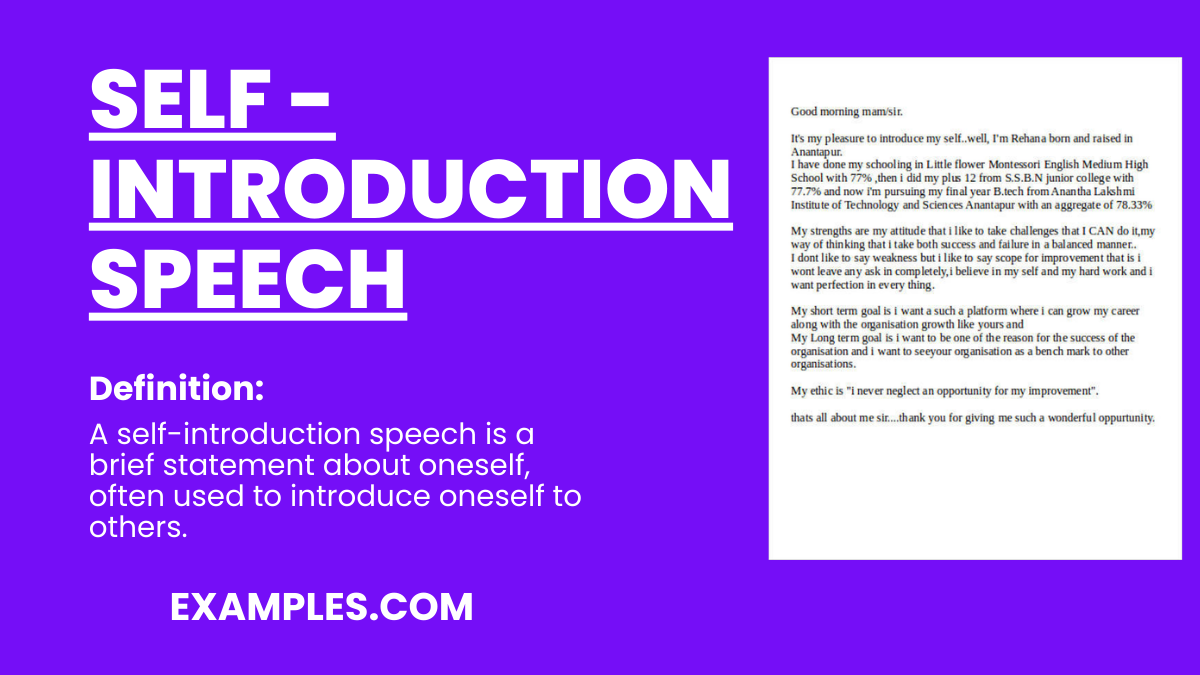
Back when we were still a kid, our parents will usually tell us that we “don’t talk to strangers.” That’s for our safety, of course. But how do we supposed to make friends when we were not allowed to talk to strangers? Right? Funny, but that is actually the case here. You may also see informative speech examples & samples.
We have to eventually introduce ourselves to random strangers. We may not want to but we have to. The technique here is to have a good self-introduction speech. It may sound professional, but it is actually easy to do, it’s more like creating a welcome speech . You don’t have to hire a speech writer or acquire a high level of speech skills.
What is Self Introduction Speech? A self-introduction speech is a brief presentation in which an individual introduces themselves to an audience. This type of speech serves to provide essential information about the speaker, including their name, background, and often their purpose for addressing the audience. It is an opportunity to make a positive first impression and establish a connection with the listeners. Self-introduction speeches are commonly used in various settings, such as formal presentations, social gatherings, job interviews, or public speaking engagements. The key elements typically covered in a self-introduction speech include personal details, professional background, and sometimes a glimpse into one’s interests or hobbies.
The Best Example of Self Introduction Speech in English
Good morning, everyone! My name is John Smith, and it’s an absolute pleasure to be here with you today. I am currently a Project Manager at Innovatech, where I’ve been leveraging technology to solve complex business problems for the past five years. I hold a Master’s degree in Business Administration from the University of XYZ, which equipped me with a solid foundation in strategic planning and operational efficiency. My passion for technology and innovation has been the driving force in my career, guiding me through various challenging yet rewarding projects. In my free time, I enjoy reading about emerging tech trends and dabbling in coding, which helps me stay ahead in this rapidly evolving field. I’m also an avid hiker, always seeking new trails to explore and appreciate the beauty of nature. I’m here today to share insights on ‘Effective Project Management in the Tech Industry’ and learn from all the distinguished professionals present. I look forward to engaging in thoughtful discussions and exchanging ideas that can propel us forward in our respective fields. Thank you for this opportunity to connect and grow together!
Format of Self Introduction Speech
Greeting and introduction.
Start with a Warm Greeting: Such as “Good morning,” “Hello,” or “Hi everyone.” State Your Name: Clearly introduce yourself.
Personal Background
Share Basic Personal Information: This could include your hometown or current place of residence. Mention Your Educational Background: Briefly state your highest level of education and the institution.
Professional Background
Current Position and Workplace: Describe your current job role and the organization you work for. Brief Career History: Outline your professional journey leading up to your current position. Key Achievements or Skills: Highlight any significant accomplishments or special skills you have.
Personal Interests or Hobbies
Share Your Interests: Briefly mention what you enjoy doing in your free time or any hobbies you have. Connect Interests to the Audience: If possible, relate your interests to the audience or the event’s theme.
Purpose of Your Speech
State the Purpose: Explain why you are giving this speech or your objective for being there. Link to the Event: If applicable, connect your introduction to the theme or topic of the event.
Closing Remarks
Express Gratitude: Thank the audience for their time and attention. Invite Interaction: If appropriate, indicate your openness to questions or further conversation.
Rehearse and Refine
Practice Your Speech: Rehearse to ensure fluency and to keep within any time constraints. Adjust as Needed: Tailor your speech to suit the audience and occasion.
Self Introduction Speech for School Students
Good morning everyone, respected principal, esteemed teachers, and my dear fellow students. My name is [Your Name], and I am thrilled to be a part of this amazing school community. Today, I am here to share a little about myself, my interests, and my aspirations. I am currently in [Your Grade], and I have recently joined this school. I come from [Your Hometown], a place known for its [Characteristic Feature of Hometown, like cultural heritage, natural beauty, etc.]. I have always been fascinated by [A Subject or Activity You’re Passionate About], which sparked my interest in [Related School Subjects or Clubs]. In my previous school, I was actively involved in [Mention any extracurricular activities you participated in, like sports, music, arts, etc.]. These activities not only shaped my skills but also taught me the importance of teamwork, perseverance, and dedication. Outside of school, I enjoy [Mention your hobbies or interests, like reading, playing a musical instrument, hiking, etc.]. I believe that these hobbies not only keep me energized and motivated but also allow me to explore my creative side. I am also deeply passionate about [Mention any social cause or issue you care about]. I have participated in [Mention any related events or activities, like community service, volunteering, etc.], which has been an incredibly rewarding experience for me. My aim during my time at this school is not only to excel academically but also to contribute positively to our school community. I am eager to join school clubs, participate in events, and collaborate with all of you on various projects. I am excited about the journey ahead and look forward to making lasting friendships and memories here. Thank you for giving me the opportunity to introduce myself, and I hope to get to know each of you better.
1 Min(Short) Self Introduction Speech for Students
Hello everyone! I’m [Your Name], currently a [Your Grade/Year] student at [Your School’s Name]. Originally from [Your Hometown], I moved here with my family [Time Period Ago, e.g., last year]. I’m really excited to be part of this vibrant school community. Academically, I have a keen interest in [Your Favorite Subjects, e.g., Science and Mathematics]. These subjects fascinate me because they challenge me to think critically and solve problems creatively. I aspire to utilize these skills in [Your Aspiration, e.g., becoming an engineer or contributing to scientific research]. Outside of academics, I’m passionate about [Your Hobby or Extracurricular Activity, e.g., playing soccer, coding, or playing the piano]. This hobby has taught me [A Skill or Value from Your Hobby, e.g., teamwork, patience, or attention to detail], which I find valuable in both my personal and school life. I also enjoy volunteering at [Any Volunteer Activity You Participate In], where I’ve learned the importance of community and helping others. It’s an experience that has enriched my understanding of social responsibility. My goal here is not just to excel in my studies but also to actively participate in school activities and clubs. I’m looking forward to making new friends, learning new things, and being a positive contributor to our school. Thank you for this opportunity to introduce myself. I’m excited about the journey ahead and am eager to get to know each of you!
2 Min Speech about Yourself Sample
Good day everyone! I’m [Your Name], and I’m genuinely excited to be here with you. I appreciate this opportunity to introduce myself and share a bit about my journey, aspirations, and interests. I hail from [Your City or Town], a place I hold dear for its [Unique Aspect of Your Hometown]. Currently, I am pursuing my studies in [Your Field of Study or Grade if you’re a student], and I’m passionate about [Mention your academic interests or subjects you’re passionate about]. My academic journey has been a blend of curiosity and a deep-seated desire to understand how things work, especially in the realm of [Mention a specific area, like technology, humanities, science, etc.]. Outside the classroom, I am [mention a personal hobby or interest]. This passion for [your hobby] has been a significant part of my life for the past [number of years you’ve been involved in the hobby], teaching me not just about [the hobby itself], but also about perseverance, patience, and the joy of mastering a skill. In addition to my studies and hobbies, I am actively involved in [Mention any extracurricular activities or volunteer work]. This involvement has allowed me to develop important skills such as [mention skills like leadership, communication, teamwork], and it has also given me the chance to give back to the community, something I find incredibly rewarding. Looking ahead, my goal is to [mention your future aspirations or goals]. I believe that the journey is just as important as the destination, and I am eager to embrace the challenges and opportunities that come my way. I’m also looking forward to learning from all of you, sharing ideas, and collaborating on exciting projects. I am here with an open mind, a thirst for learning, and a desire to contribute positively to our community. Thank you for listening, and I am excited about the prospect of getting to know each of you better!
How to Prepare Self Introduction Speech
Preparing an effective self-introduction speech involves careful planning and practice. It’s an opportunity to present yourself in a manner that is both informative and engaging. Here’s a guide on how to prepare for your self-introduction speech:
1. Understand Your Audience
- Audience Analysis: Consider the interests, expectations, and the level of formality of your audience.
- Context of the Introduction: Tailor your speech according to the occasion, whether it’s a professional setting, a classroom, or a social gathering.
2. Define Your Key Message
- Main Points: Decide on the main points you want to convey. Typically, these include your name, your background, your interests, and why you’re there.
- Unique Selling Point: Identify what makes you unique. This could be a specific skill, experience, or personal trait.
3. Structure Your Speech
- Introduction: Start with a hook – a question, a quote, an interesting fact, or a short story to grab attention.
- Body: Present your main points in a logical sequence. Include personal anecdotes or experiences to make your speech more relatable.
- Conclusion: Summarize your main points and end with a memorable statement or a call to action.
4. Personalize Your Speech
- Be Authentic: Speak about your genuine interests and experiences. Authenticity creates a connection with your audience.
- Reflect Your Personality: Let your personality shine through your speech. This makes you more relatable and memorable.
5. Practice, Practice, Practice
- Rehearse Aloud: Practice your speech multiple times to gain fluency. This also helps in managing your speech duration.
- Record Yourself: Recording and listening back can help you notice areas for improvement in delivery and pacing.
- Get Feedback: If possible, rehearse in front of someone and ask for constructive feedback.
6. Prepare for the Delivery
- Body Language: Use positive body language. Stand straight, make eye contact, and use hand gestures naturally.
- Voice Modulation: Use variations in your tone to emphasize key points and to keep the audience engaged.
- Pace Yourself: Speak clearly and at a moderate pace. Avoid speaking too fast, as it can make you seem nervous.
7. Plan for Q&A
- Anticipate Questions: Think about potential questions the audience might ask and prepare your responses.
- Engage with the Audience: Be ready to engage in a conversation post your introduction, if the format allows it.
Best Introduction Lines About Yourself
Introducing yourself effectively can set the tone for a meaningful interaction, whether it’s in a professional, academic, or social setting. Here are some engaging lines to introduce yourself that can be adapted to various contexts:

Professional Setting
- “Hello, I’m [Your Name], and I bring [Number of Years] years of experience in [Your Profession or Field], specializing in [Your Specialization].”
- “I’m [Your Name], currently leading the [Your Department/Team] at [Your Company], where I focus on [Key Aspect of Your Job].”
- “Good day! I’m [Your Name], a [Your Job Title] passionate about [Aspect of Your Job You’re Passionate About]. My work primarily revolves around [Brief Description of Your Work].”
Academic Setting
- “Hi, I’m [Your Name], a [Your Year, e.g., sophomore] at [Your School], majoring in [Your Major], with a keen interest in [Your Area of Interest].”
- “I’m [Your Name], currently pursuing my [Degree, e.g., Master’s] in [Your Field] at [Your University], where I’m deeply involved in [Your Research Topic/Area of Study].”
- “Hello everyone, I’m [Your Name]. As a [Your Grade/Year] student at [Your School], I’ve developed a strong interest in [Your Favorite Subjects or School Activities].”
Social or Informal Setting
- “Hi, I’m [Your Name]! In my world, you’ll often find me [A Hobby or Activity You Enjoy, e.g., hiking, reading, or cooking], or exploring [Something You Like Exploring, e.g., new cuisines, technology trends].”
- “I’m [Your Name], a lover of [Your Interest, e.g., music, books, sports], and always up for a good conversation about [A Topic You Enjoy Discussing].”
- “Hello, I’m [Your Name], and my friends describe me as [A Personality Trait or Interest, e.g., a creative thinker, an avid traveler]. I personally enjoy [An Activity or Interest, e.g., crafting stories, exploring nature].”
Specialized Interests
- “Hey there, I’m [Your Name], an enthusiastic [Your Hobby or Interest, e.g., gamer, photographer, cyclist] with a passion for [Related Interest, e.g., storytelling in games, capturing moments, long-distance cycling].”
- “I’m [Your Name], and my world revolves around [Your Passion, e.g., environmental advocacy, technological innovations]. I spend my time [Related Activity, e.g., organizing clean-ups, keeping up with the latest tech news].”
Volunteer or Community Work
- “Hello! I’m [Your Name], and I dedicate a significant part of my time to [Your Volunteering Work, e.g., animal rescue, teaching underprivileged children], which has taught me [A Skill or Value from Volunteering, e.g., patience, compassion].”
More Topics with Samples
- Self Introduction Speech for Elementary School
- Self Introduction Speech for Middle School
- Self Introduction Speech for High School
- Self Introduction Speech for College
- Self Introduction Speech for University
- Self Introduction Speech for Interview
- Self Introduction Speech for First Day at work
- Pageant Introduction Speech
How to Introduce Yourself in a Speech
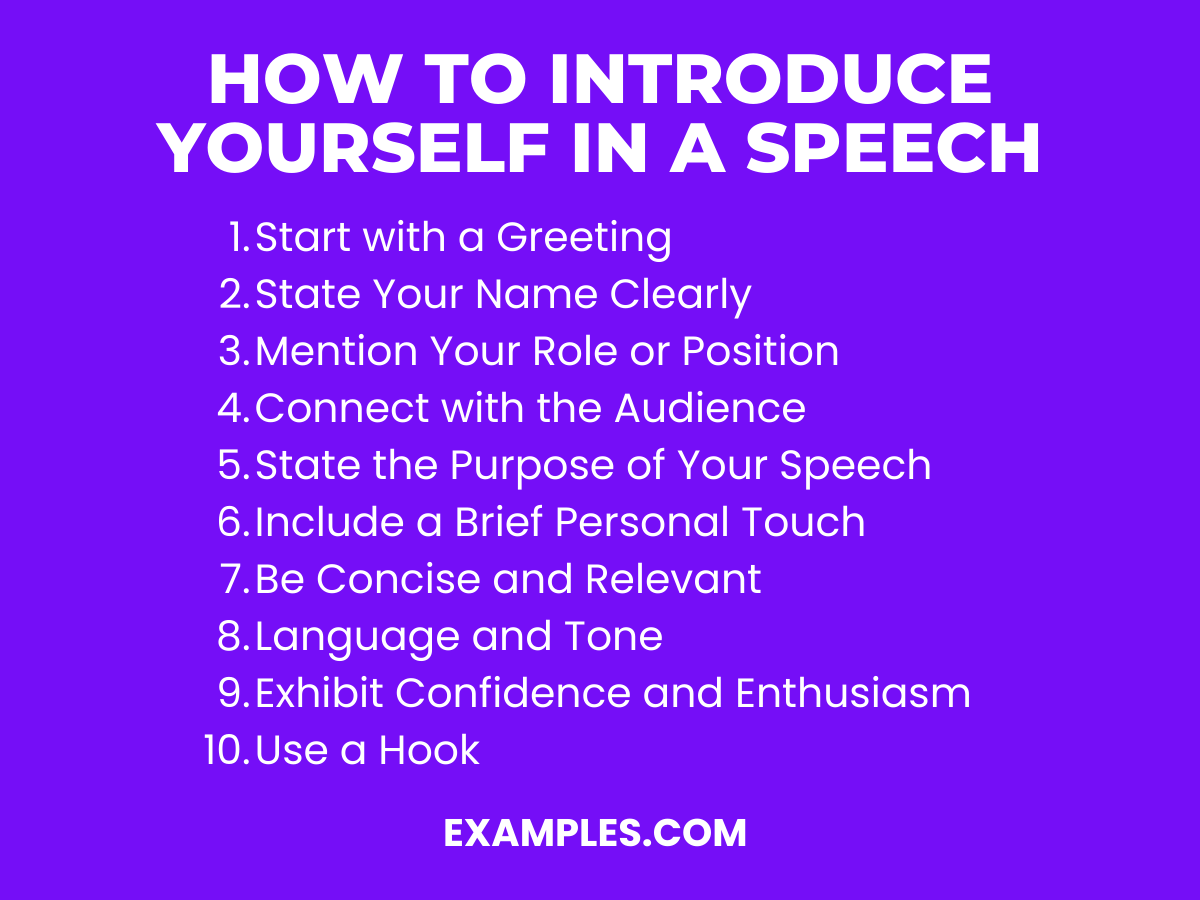
Self Introduction Letter For Job

- Google Docs
- Apple Pages
Size: 37.4 KB
Client Self Introduction Example

Size: 109 KB
Self Introduction For College Students
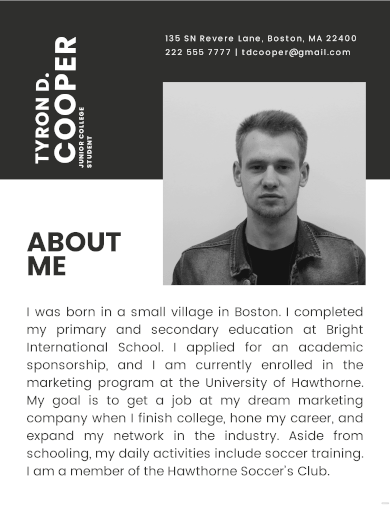
Size: 107 KB
Self Introduction For Job Example
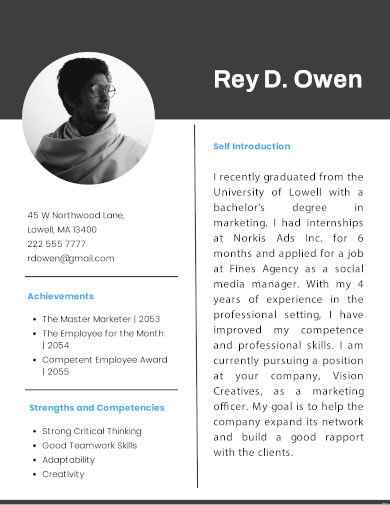
Size: 88.4 KB
Self Introduction For Kids Example
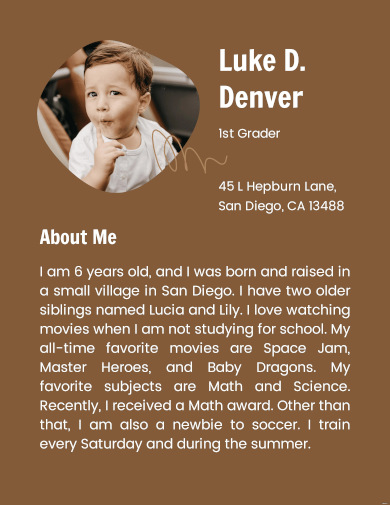
Size: 123 KB
Simple Self Introduction Example
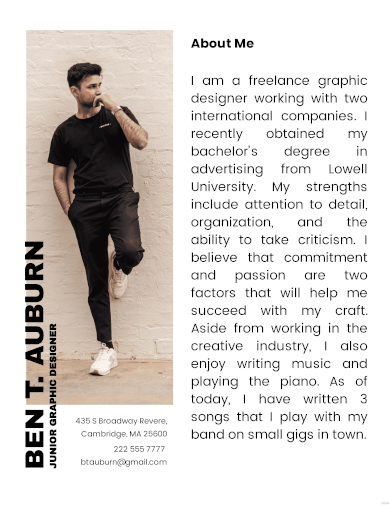
Size: 178 KB
Self Introduction Sample Example
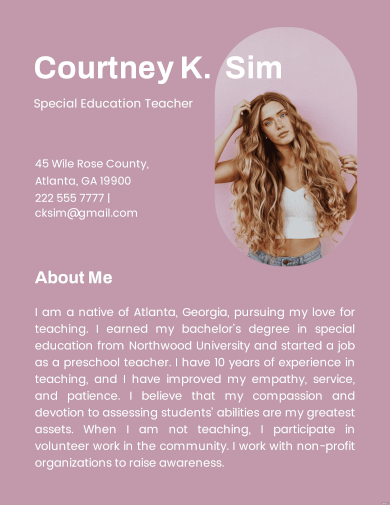
Size: 142 KB
Self Introduction For Freshers Example
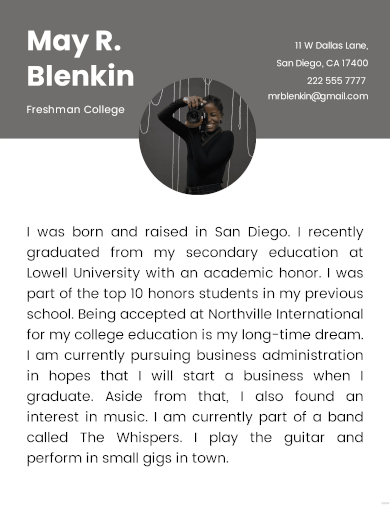
Size: 96.2 KB
Self Introduction For Interview Example
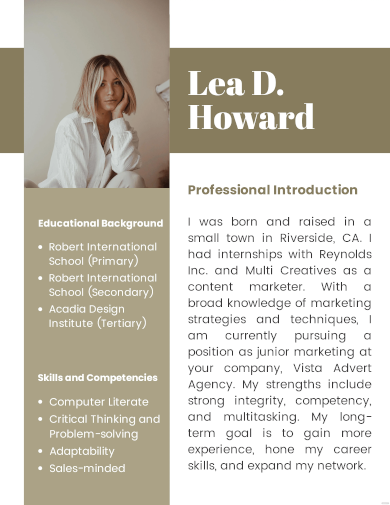
Size: 129 KB
Minimalist Self Introduction Example
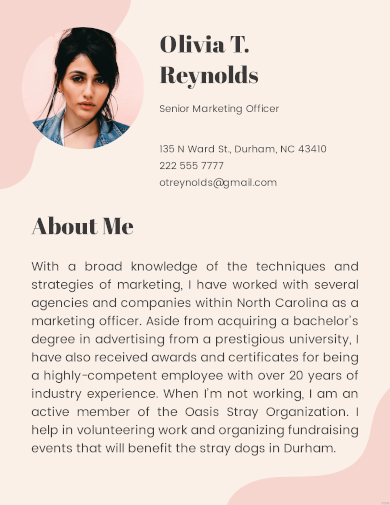
Size: 120 KB
Creative Self Introduction Example

Size: 135 KB
Self Introduction for an Interview Example
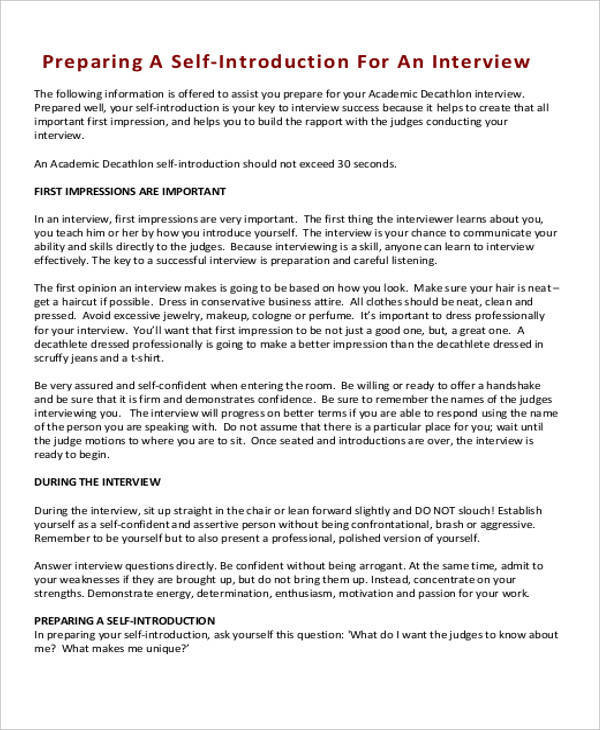
academicdecathlon.org
Size: 159 KB
Professional Self Introduction Example
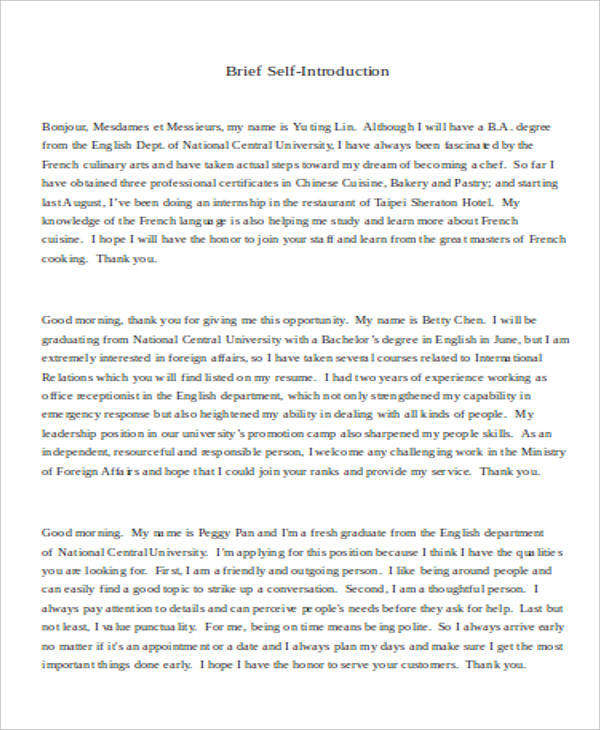
Size: 53 KB
Student Self Introduction Example
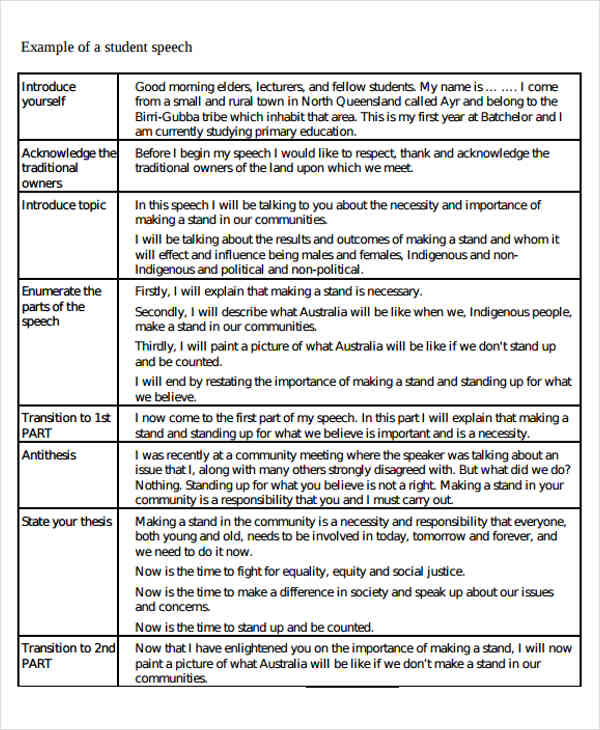
waalc.org.au
Size: 13 KB
How to Start a Self-Introduction Speech?
Introducing yourself to a group of strangers can be intimidating and awkward. But you can avoid this by crafting a proper and good self-introduction speech. You may also check out presentation speech examples & samples
Here’s how to start a self-introduction speech.
- Start by stating your full name clearly and your personal details. Say it out loud like you are giving a leadership speech .
- Mention where you from or an organization you belong.
- Give your personal and educational background. If it’s necessary, tell your family background
- Talk about your interest, hobbies or passion.
Formal Self Introduction Example
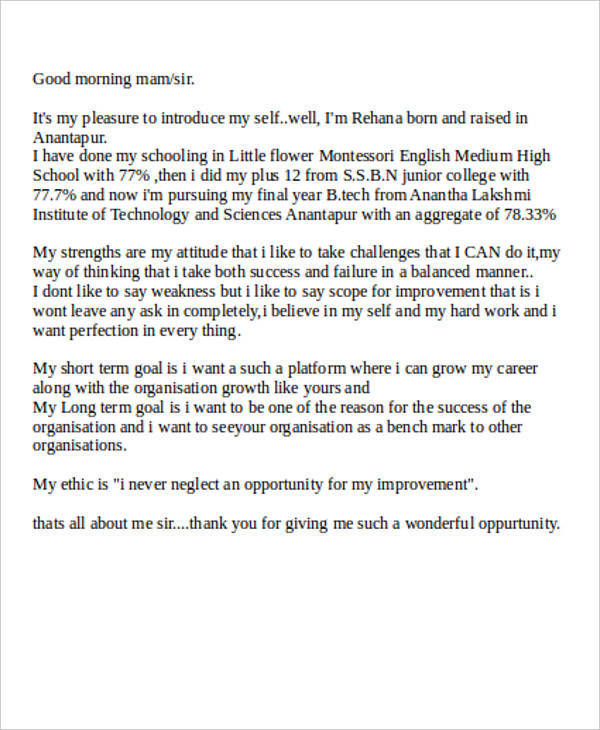
howtogiveselfintroductionininterview.blogspot.in
Size: 40 KB
Self Introduction to Employers Example
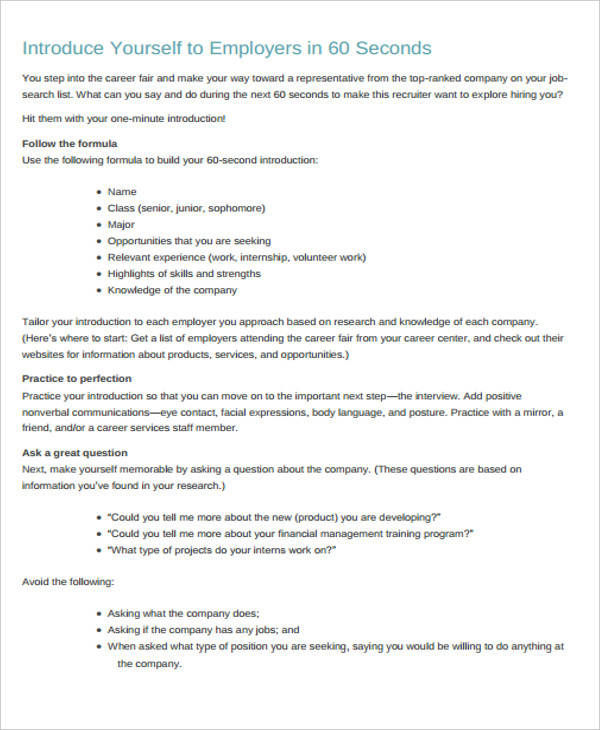
Size: 149 KB
Sample Self Introduction Example
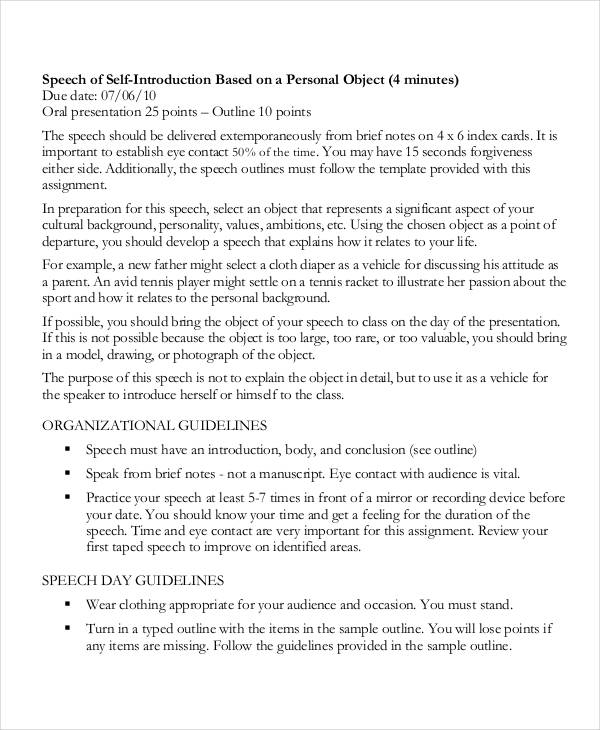
de.lbcc.edu
Size: 83 KB
Facts About Yourself
- Hometown: “I grew up in a small town known for its historic landmarks.”
- Education: “I have a degree in environmental science and am passionate about sustainability.”
- Career: “I work in graphic design and love bringing ideas to life visually.”
- Family: “I come from a family of five, and I’m the middle child.”
- Hobbies: “In my free time, I enjoy hiking and landscape photography.”
- Travel: “I’ve backpacked across several countries in Europe and Asia.”
- Skills: “I’m fluent in Spanish and have basic skills in sign language.”
- Volunteering: “I volunteer at an animal shelter on weekends.”
- Favorite Cuisine: “I’m a food enthusiast, with Italian cuisine being my favorite.”
- Unique Experience: “I once participated in a marathon and completed it, which was a big achievement for me.”
Tips for Self-Introduction Speech
Self-introduction speeches can be quite tricky and hard to do. There are lots of things to consider to deliver a better self-introduction speech. Still, it is extremely important as it gives you a good first impression that will have a big impact on how people perceive you. You may also see motivational speech examples & samples
1. Start with a Strong Opening
- Capture Attention: Begin with an interesting fact, a brief story, or a quote that relates to your personality or experiences. This helps to engage your audience from the start.
2. Keep It Concise and Relevant
- Be Brief: Remember, brevity is key. Stick to a few important points without going into too much detail.
- Stay Relevant: Tailor your introduction to your audience and the context of the occasion.
3. Share Personal Insights
- Personal Anecdotes: Include a short personal story or experience that gives insight into who you are.
- Unique Traits: Highlight unique aspects of your personality or background that make you stand out.
4. Be Enthusiastic and Positive
- Show Enthusiasm: Your tone and body language should convey enthusiasm. Smile and maintain a positive demeanor.
- Speak with Confidence: Confidence in your speech will make you more engaging.
5. End with a Purpose
- Closing Statement: End your introduction with a statement that indicates your purpose, your goals, or what you’re looking forward to in your new role or environment.
6. Practice and Prepare
- Rehearse: Practice your speech to ensure fluency and to manage its duration.
- Get Feedback: If possible, rehearse in front of a friend or family member and get their feedback.
7. Engage with Your Audience
- Eye Contact: Make eye contact with your audience to create a connection.
- Involve the Audience: If appropriate, ask a rhetorical question or make a statement that involves the audience.
8. Mind Your Language and Tone
- Clear and Simple Language: Use language that is easy to understand. Avoid jargon unless you are sure the audience will understand it.
- Appropriate Tone: Adjust your tone according to the formality of the occasion.
9. Use Humor Wisely
- Light Humor: If it comes naturally, a touch of humor can be effective, but it should be appropriate to the setting and audience.
10. Reflect and Adapt
- Be Adaptable: Be prepared to modify your speech slightly depending on the audience’s reaction.
- Continuous Improvement: Reflect on your performance and think about ways to improve for next time.
Text prompt
- Instructive
- Professional
Write a Self Introduction Speech for a new job.
Create a Self Introduction Speech for a university class.

- Business Management
- Career development
- Communication & Skills
- Finance & Accounting
- Marketing & Sales
- Self introduction
- Strategy & Innovation
- Business Tools

Master Your Self Introduction Speech: Tips & Examples
Build and scale your own saas business.
Launch your own branded SaaS effortlessly and create recurring revenue.
Automate Your SEO for Faster Results
AI-powered platform for automated audits, competitor analysis, and content optimization.
Disclaimer : We sometimes use affiliate links in our content. For more information, visit our Disclaimer Page .
Welcome to our article on mastering the art of self-introduction speeches. Whether at a job interview, networking event, or social gathering, delivering a confident and effective self-introduction can make all the difference.
In this article, we’ll cover the purpose of a self introduction speech , understanding your audience, crafting a compelling opening, sharing your background and expertise, highlighting your achievements and qualities, adding personal touch and authenticity, practicing and polishing your speech, overcoming nervousness and building confidence, and more. Let’s dive in!
Key Takeaways:
- A well-crafted self-introduction speech can help establish a connection with the listeners and set the stage for effective communication.
- Understanding your audience is crucial for tailoring your introduction and creating a memorable impression .
- A compelling opening can grab the audience’s attention and make them curious about your words.
- Sharing your background, expertise, achievements, and qualities can help build credibility and leave a lasting impression.
- Adding a personal touch and authenticity can make your speech more relatable and memorable.
- Practicing and polishing your speech can improve your confidence and delivery.
- Overcoming nervousness and building confidence requires positive self-talk, visualization, and relaxation techniques.

The Purpose of a Self Introduction Speech
A self-introduction speech is an essential tool in effective communication . It serves as your first interaction with the audience, setting the tone for the rest of your speech. A self-introduction speech aims to introduce yourself and establish a connection with the listeners. It helps you build trust, credibility, and likeability, which are critical for successful communication .
A well-crafted self-introduction speech can also help you stand out from the crowd, create a memorable impression, and leave a lasting impact on the listeners. You can convey who you are and what you have to offer by sharing your interests, background, expertise, and qualities. This can be particularly useful in networking events, job interviews , or any situation where you must make a strong first impression.
Lastly, a self-introduction speech also helps you overcome nervousness and build confidence in public speaking. You can improve your speaking skills, overcome stage fright, and project a positive image by practicing and delivering your speech. Overall, a self-introduction speech aims to introduce yourself in the best possible way and pave the way for effective communication with your audience.
Understanding Your Audience
Understanding your audience is one of the most crucial aspects of delivering an effective self-introduction speech. Knowing who you are speaking to, you can tailor your introduction to resonate with them. Here are a few tips to help you identify your audience:
- Research the event, organization, or individual you are speaking to.
- Talk to the event organizer or someone familiar with the audience to get insights into their interests and needs.
- Consider demographics such as age, gender, occupation, and cultural background.
Once you understand your audience better, you can craft an introduction that will capture their attention and connect with them.
Tailoring Your Introduction to Your Audience
Now that you have identified your audience, it’s time to tailor your self-introduction speech to their characteristics. Here are some tips:
By tailoring your introduction to your specific audience, you can establish a connection and engage them right from the start.
Crafting a Compelling Opening
The opening of your self-introduction speech is crucial. It sets the tone for the rest of your presentation and determines whether the audience will be engaged. Here are some tips for crafting a compelling opening that will grab the audience’s attention:
- Start with a hook: Begin with a surprising statement, an interesting fact, or a rhetorical question that will pique the audience’s curiosity and make them want to know more.
- Tell a story: A well-crafted story can be a powerful way to connect with the audience and make your speech memorable. Choose a personal anecdote that relates to the topic of your speech and illustrates a key point.
- Pose a thought-provoking question: Ask questions that challenge the audience’s assumptions or encourage them to think deeply about the topic. Make sure the question is relevant to the rest of your speech.
- Use a quote: A quote from a famous person or an expert in your field can lend credibility to your speech and inspire the audience. Choose a quote that relates to the topic of your speech and highlights a key point.
Remember, opening your self-introduction speech is your chance to make a strong first impression . Don’t be afraid to be creative and take risks. A compelling opening can set the stage for a successful speech.
Sharing Your Background and Expertise
Once you have captured your audience’s attention with a compelling opening, it is time to share your background and expertise. This section provides an opportunity to highlight your relevant experiences and expertise concisely and engagingly.
Select the most impactful experiences and qualifications related to your topic or the event to avoid overwhelming your audience. This could be a relevant work experience, education, or a noteworthy accomplishment. Remember to keep it brief and focused, highlighting only what is most important to your audience.
When sharing your background and expertise, it is important to establish credibility and make a connection with your audience. This can be achieved by incorporating personal anecdotes and stories about your expertise or accomplishments. This will help your audience to relate to you and remember well beyond your self-introduction speech.
When sharing your expertise, it is also important to consider your audience’s interests and expectations. Use language your audience can understand, avoid technical jargon, and keep your tone approachable. This will help to build a rapport with your audience and establish a connection that will make your introduction memorable.
Highlighting Your Achievements and Qualities
Sharing your achievements and qualities is crucial to a self-introduction speech. However, it is important to choose only the most relevant ones that align with the context of your speech. You want to avoid overwhelming your audience with a laundry list of accomplishments. Tailoring your achievements and qualities to your audience is important, highlighting those most likely to resonate with them.
When deciding which achievements and qualities to share, consider the purpose of your speech and the message you want to convey. Think about what sets you apart from others and how your experience and qualities make you uniquely qualified to speak on your chosen topic. Share personal stories or anecdotes that illustrate your achievements and qualities, making your speech more engaging and memorable.
Confidence plays a crucial role in effectively communicating your achievements and qualities. Practice your speech in front of a mirror or with a friend to build confidence and delivery. Remember to maintain good eye contact and speak clearly and confidently to leave a lasting impression on your audience.
Adding Personal Touch and Authenticity
One of the keys to a memorable self-introduction speech is adding a personal touch and authenticity. Injecting your personality and unique experiences into your introduction can make it more engaging and relatable to your audience. Authenticity is essential, as it helps to build credibility and trust with your listeners.
To add a personal touch to your introduction, consider sharing an anecdote or a personal story relevant to the topic or the audience. This can help to establish a connection with your listeners and make your introduction more memorable. You can also highlight any personal interests, passions, or hobbies you have, making you more relatable.
When it comes to authenticity, being genuine to yourself is important. Don’t try to be someone you’re not or exaggerate your accomplishments and qualities. Instead, highlight your unique strengths and experiences and how they have shaped you.
Remember, a self-introduction speech aims to present yourself in the best possible light while still being true to who you are. Adding a personal touch and authenticity to your introduction can make a lasting impression on your audience and leave them wanting to learn more about you.
Regarding self-introduction speeches, the opening is arguably the most critical part. Your opening will set the tone for the rest of your speech and determine whether your audience will be interested in what you have to say. Therefore, crafting a compelling opening is crucial in engaging your listeners immediately.
One great way to start your self-introduction speech is by using a strong hook to grab the audience’s attention. This can be an interesting fact, a thought-provoking question, or a personal anecdote related to your topic. A hook should be relevant, unique, and memorable to keep the audience interested in what you have to say.
Another way to make your opening compelling is by storytelling. Humans are naturally drawn to stories, and sharing a personal experience or using a story to relate to your topic can help make your introduction more engaging and relatable.
Lastly, a thought-provoking question is a highly effective method to engage the audience, forcing them to think and ponder and create a conversational tone. The right question can stimulate the audience’s minds and create an interactive and meaningful discussion.
Overcoming Nervousness and Building Confidence
Feeling nervous or anxious before delivering a self-introduction speech is completely normal. However, if left unmanaged, it can negatively affect your delivery and the overall impact of your speech . The good news is that there are strategies you can use to overcome nervousness and build confidence.
One effective technique is positive self-talk. Before delivering your speech, remember your strengths, skills, and accomplishments. Repeat positive affirmations to yourself, such as “I am confident, capable, and prepared to deliver this speech.
Visualization is another powerful tool to overcome nervousness. Close your eyes and imagine yourself delivering your speech confidently, poise, and clearly. Visualize the audience responding positively to your message and giving you a warm reception.
It’s also helpful to practice relaxation techniques such as deep breathing or progressive muscle relaxation. These can help calm your nerves and focus your energy on delivering a confident and effective self-introduction speech.
By applying these techniques, you can overcome nervousness and build the self-confidence needed to deliver a successful self-introduction speech.
Mastering the art of self-introduction speeches is an essential skill in today’s world. Whether meeting new people, networking, or presenting in front of an audience, a confident and effective self-introduction can make a lasting impression.
Remember to understand your audience, craft a compelling opening, showcase your background and expertise, highlight your achievements and qualities, and add a personal touch to create an authentic connection. Practice and polish your speech to improve your confidence and delivery, and don’t let nervousness hold you back.
Following the tips and techniques in this article, you can confidently present yourself and leave a lasting impression in any public speaking situation. So go ahead and take the challenge, and watch your self-confidence soar!
How do you start a self introduction speech?
How do i start my self introduction , what do you say in a 2-minute speech about yourself , how to start a speech in english , what is the purpose of a self introduction speech , related posts:.
- What is a Self Introduction Speech: The Guide to Making an Impression
- The Importance of a Well-Structured Self-Introduction Speech
- Craft the Perfect 2 Minute Self Introduction Speech | Guide
- 3 Minute Self Introduction Speech Examples: Make an Impact
Nail Your Self Introduction for Sales Interview: Expert Tips & Tricks
What is workplace bullying definition: get the facts straight, related posts.

Best Self-Introduction for First Day at Work Sample Ideas

Self Introduction as an Entrepreneur: Tips for Confidently Sharing Your Story

Master Your First Day at Work: Self Introduction Tips & Tricks
© 2021 interObservers
Navigate Site
- Privacy and Policy
- Terms and Conditions
Welcome Back!
Login to your account below
Remember Me
Retrieve your password
Please enter your username or email address to reset your password.
- Games, topic printables & more
- The 4 main speech types
- Example speeches
- Commemorative
- Declamation
- Demonstration
- Informative
- Introduction
- Student Council
- Speech topics
- Poems to read aloud
- How to write a speech
- Using props/visual aids
- Acute anxiety help
- Breathing exercises
- Letting go - free e-course
- Using self-hypnosis
- Delivery overview
- 4 modes of delivery
- How to make cue cards
- How to read a speech
- 9 vocal aspects
- Vocal variety
- Diction/articulation
- Pronunciation
- Speaking rate
- How to use pauses
- Eye contact
- Body language
- Voice image
- Voice health
- Public speaking activities and games
- Blogging Aloud
- About me/contact
- How to write an introduction speech for a guest
- How to give a self-introduction speech
An example of a self-introduction speech
- with a step-by-step guide for preparing a short effective speech .
By: Susan Dugdale
A self-introduction speech is often called for when a group of people get together first time. It could be a work-based seminar, a break-out group at a conference, a hobby group, or your new class at the start of the term. The occasions are numerous!
If you need to prepare short introduction speech about yourself, you're in the right place.
What's on this page

- the purpose of a self-introduction speech
- content guidelines - 6 areas to cover introducing yourself
- how to avoid blanking out under pressure and prepare a good speech at very short notice
- a 1-minute example of a self-introduction speech
- resources for more help
The purpose of a self-introduction speech
One thing a newly formed group generally shares is the need to make a bunch of strangers feel at ease: to quickly establish a sense of unity or belonging.
And one of commonest ways to achieve that, in a setting where people are expected to work collaboratively together, is to have each person give a brief 1–2-minute self-introduction speech. *
If you've not expecting it and have nothing prepared, that triggers a whole lot of questions about the purpose of the speech and what would be best to say. * This is not an elevator speech - i.e., a brief, carefully worked pitch highlighting your strengths and experience to encourage a potential employer or client to consider taking you on.
You are already a member of the group. You don't need to pitch or advertise yourself. All you need to do is introduce yourself because these people don't know you.
Common questions people ask themselves
Usually, the leader will start and around the members of the group you go, one by one.
- What will you say when it's your turn?
- What's the purpose of this speech? What could it to achieve for you if you do it well?
- What can you say that will interest people?
- What topics fit with the occasion?
- What will the people listening expect to hear?
- What tone do you use? Formal or informal?
- And more importantly, if you're anxious about public speaking, what will stop the fear of making a complete fool of yourself?
First impressions count, so let's look at the elements that go together to make a good introduction speech about yourself.
Return to Top
Self-introduction speech content areas
There are six content areas to cover. The first three are essential. The remaining three lift your speech from 'basic' to something a little more interesting.
- Stating your name clearly
- Placing yourself - where you are from, the organization you belong to, the position you currently hold
- Background - what can you share that is related to the group's core purpose for meeting? Is it an event, experience, a particular skill or educational qualification?
- Interest, passion or goal - what genuinely interests you? What drives you? Is there a personal goal you want to achieve through being a member of this group?
- Sharing personal details appropriate to the setting of your speech e.g., your hobbies or pet peeves.
- Unity - what do you share in common with someone else in the group? Can you reference something somebody speaking before you said?
Self-preservation techniques for nervous speakers
Ignore everyone else and focus on yourself.
If this is the first time you've made an introduction speech about yourself and, you're inclined to be tongue-tied, awkward and nervous, don't listen to what others are saying before you.
I know that seems rude, but the situation calls for self-preservation.
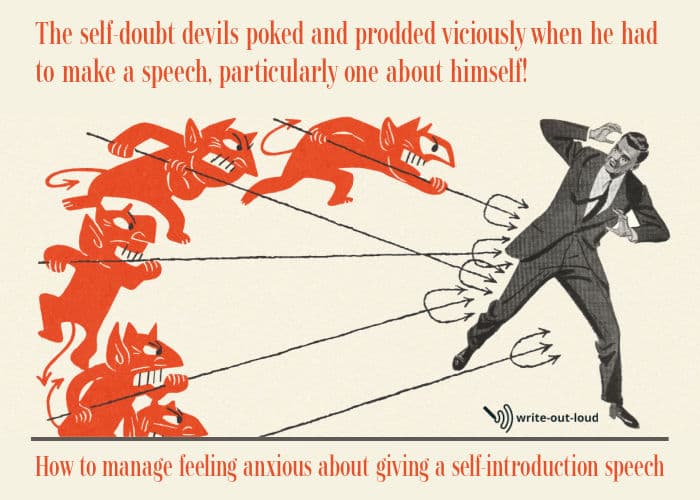
If you allow yourself to listen, you'll get mesmerized by everybody else's speeches and be unable to plan anything useful for yourself. That will heighten your anxiety.
Start with making some notes
Grab a piece of paper, or use the notes app on your phone, the moment the round-robin introduction is announced and start jotting down ideas.
Start with the first three items from the list above. That's the basic information: your name, where you are from and your background. Then add more as time permits.
Everything you put down should be relevant to the occasion and your audience. And remember to breathe well while you're doing it!
When we're anxious we tend to hold our breath which makes us feel worse. You'll find these breathing exercises help.
Watch the timing
Generally, the timing allowed for a self-introductory speech is between 1 - 2 minutes. (About 150-300 words.)
Going over that is poor form because it eats into the time allocated for everybody to speak. In addition, rambling on without being mindful of the larger group could be interpreted as boring and/or egotistical. Just try not to do it! ☺
Example self-introduction speech
Here's a simple short self-introduction speech sample. You can use it as a model to prepare your own speech. All up there are 130 words which will take approximately a minute to say.
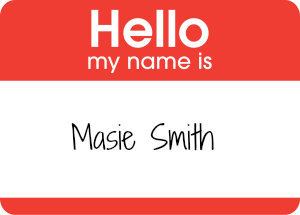
Hi everybody!
I'm Masie Smith, Senior Marketing Executive, from Watts and Frederick in Smalltown, Bigstate.
It's great to be finally here. I've been dreaming about the opportunity and possibilities of working collectively and directly with each other for a long time now. Jane and Sam can attest to that. There's been hours put in balancing the schedules to make it happen.
Webinars and email are fine, but nothing beats face to face.
Working collaboratively has always been a passion. Even in kindergarten I tried to set up a group-think session around a one swing and ten children problem.
Years later my master degree focused on harnessing group energy creatively. I've been inspired by agencies that got it right.
Sally you've already said it and I echo you. I'm excited!
Prepare and practice in readiness
If you know you have situations coming up that will call for a self-introduction speech start generating one ahead of time.
Make yourself an adaptable template using the core content elements listed above that you can use whatever the situation you are in.
Practicing your speech out loud will help you refine and hone your message.
It's well worth doing as these few words can set the way in which others view you. They can open doors, as well as close them!
With repetition you'll gain the confidence to speak for yourself concisely and cohesively. You'll find the temptation to succumb to a fit of the blithers will have vanished! (Thank goodness!)

Other related and useful pages:
- How to prepare and deliver an introduction speech for a guest speaker (with an example speech)
- How to write a speech introducing yourself . This is Wiki How's comprehensive overview of the process, with examples.
- Tips and techniques to manage public speaking anxiety
speaking out loud
Subscribe for FREE weekly alerts about what's new For more see speaking out loud

Top 10 popular pages
- Welcome speech
- Demonstration speech topics
- Impromptu speech topic cards
- Thank you quotes
- Impromptu public speaking topics
- Farewell speeches
- Phrases for welcome speeches
- Student council speeches
- Free sample eulogies
From fear to fun in 28 ways
A complete one stop resource to scuttle fear in the best of all possible ways - with laughter.

Useful pages
- Search this site
- About me & Contact
- Free e-course
- Privacy policy
©Copyright 2006-24 www.write-out-loud.com
Designed and built by Clickstream Designs

COMMENTS
Download Article. 1. Make an outline of your speech. Start by making a skeletal draft of your main points. Strip the speech down to its bare bones to determine what is most important to say, and in what order you should deliver those facts. This is the basic structure which you will build your speech around.
A self-introduction at a professional event will be very different from one at a casual party. Start Strong: Grab the audience's attention from the beginning. You can start with an interesting fact about yourself, a short story, or a joke if the setting is informal. Keep It Brief: Your introduction should be concise and to the point. Stick to ...
Speech 1. "Hello everyone. As the newest member of the marketing team, I want to share a bit about myself. My story started in a small town in Oregon, where I grew up surrounded by nature and technology. My parents ran a local computer repair shop, which sparked my interest in both technical skills and customer service.
A self introduction speech is a short speech you deliver to introduce yourself and sell yourself to the people you're speaking to. The purpose of this speech is to make your audience feel comfortable with you, and it's usually done in person. ... How To Start A Self Introduction Speech? 1. Start with a quote. 2. Give a brief account of your ...
Sample Introduction Speech Topics. Look at the sample self introduction speech topics and pick out the aspects of your personal life you want to share with the audience. Approach the list below with the who, the what, the whereabouts, for sure the why, the how and when questions. That is an effective way to outline your first thoughts.
With a word processor, or pencil and paper, write "Introduction," "Body," and "Conclusion." Then sum up the main points in each section with bullets. You don't even have to use full sentences here. Just get down quick summaries of what each section of your speech will contain.
It's an opportunity to present yourself in a manner that is both informative and engaging. Here's a guide on how to prepare for your self-introduction speech: 1. Understand Your Audience. Audience Analysis: Consider the interests, expectations, and the level of formality of your audience. Context of the Introduction: Tailor your speech ...
One great way to start your self-introduction speech is by using a strong hook to grab the audience's attention. This can be an interesting fact, a thought-provoking question, or a personal anecdote related to your topic. ... In a 2-minute self introduction speech, introduce yourself with a greeting and your name. Share relevant details about ...
Follow these steps to learn how to write a memorable introduce yourself speech: 1. Start with a strong introduction. Write the introductory part of your speech in a way that gets the attention of your audience and makes them want to listen to what you have to say. This step is essential to ensure that your audience follows through with your ...
A self-introduction speech is often called for when a group of people get together first time. It could be a work-based seminar, a break-out group at a conference, a hobby group, or your new class at the start of the term. The occasions are numerous! If you need to prepare short introduction speech about yourself, you're in the right place.